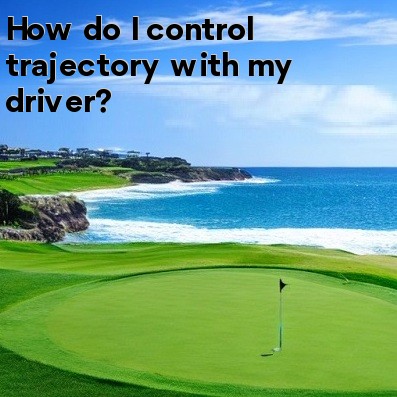
Controlling Trajectory with Your Driver in Golf
When it comes to golf, controlling the trajectory of your shots is a crucial skill to have. This is especially true with your driver, as it is the club that allows you to hit the ball the farthest. Being able to control the trajectory of your driver shots can help you navigate different course conditions and hit the ball with the desired flight path.
Here are a few tips to help you control the trajectory of your driver:
- Ball Position: The position of the golf ball in your stance plays a significant role in controlling trajectory. If you want to hit a lower shot, you should play the ball slightly back in your stance, closer to your right foot (for right-handed golfers). On the other hand, if you're aiming for a higher shot, move the ball forward in your stance, closer to your left foot.
- Angle of Attack: The angle at which you strike the ball also affects trajectory. To hit a higher shot, you should aim to hit the ball on the upswing, with a positive angle of attack. This means hitting the ball while the clubhead is still ascending. Conversely, to achieve a lower trajectory, you want to have a more shallow angle of attack or even a slight downward strike.
- Clubface Angle: Another crucial factor in controlling trajectory is the angle of the clubface at impact. To hit a higher shot, you should have a slightly open clubface at impact, which increases the loft and launches the ball higher. In contrast, if you want a lower shot, you should aim to have a slightly closed clubface at impact, decreasing the loft and keeping the ball lower.
- Swing Speed: Adjusting your swing speed can also help control trajectory. To hit a lower shot, you can consider swinging a bit faster, compressing the ball more and reducing launch. Conversely, to hit a higher shot, a slightly slower swing speed can help increase the launch angle and maximize height.
- Spin: Spin is another element that affects trajectory. Backspin on the ball tends to create a higher ball flight, while reduced backspin can result in a flatter trajectory. Pay attention to your impact position and make sure you are striking the ball with the center of the clubface to optimize spin for your desired trajectory.
- Shaft Flex: Lastly, the flex of your driver shaft can also impact trajectory. Generally, a stiffer shaft can help lower the trajectory, while a more flexible shaft can assist in achieving a higher flight. Evaluating your swing characteristics and working with a professional club fitter can help determine the right flex for your needs.
Remember, controlling trajectory with your driver requires practice and experimentation. It's important to spend time on the driving range, working on these various elements and finding what works best for your game. Over time, you'll develop the ability to control the trajectory of your driver shots and add another valuable skill to your golf game.





